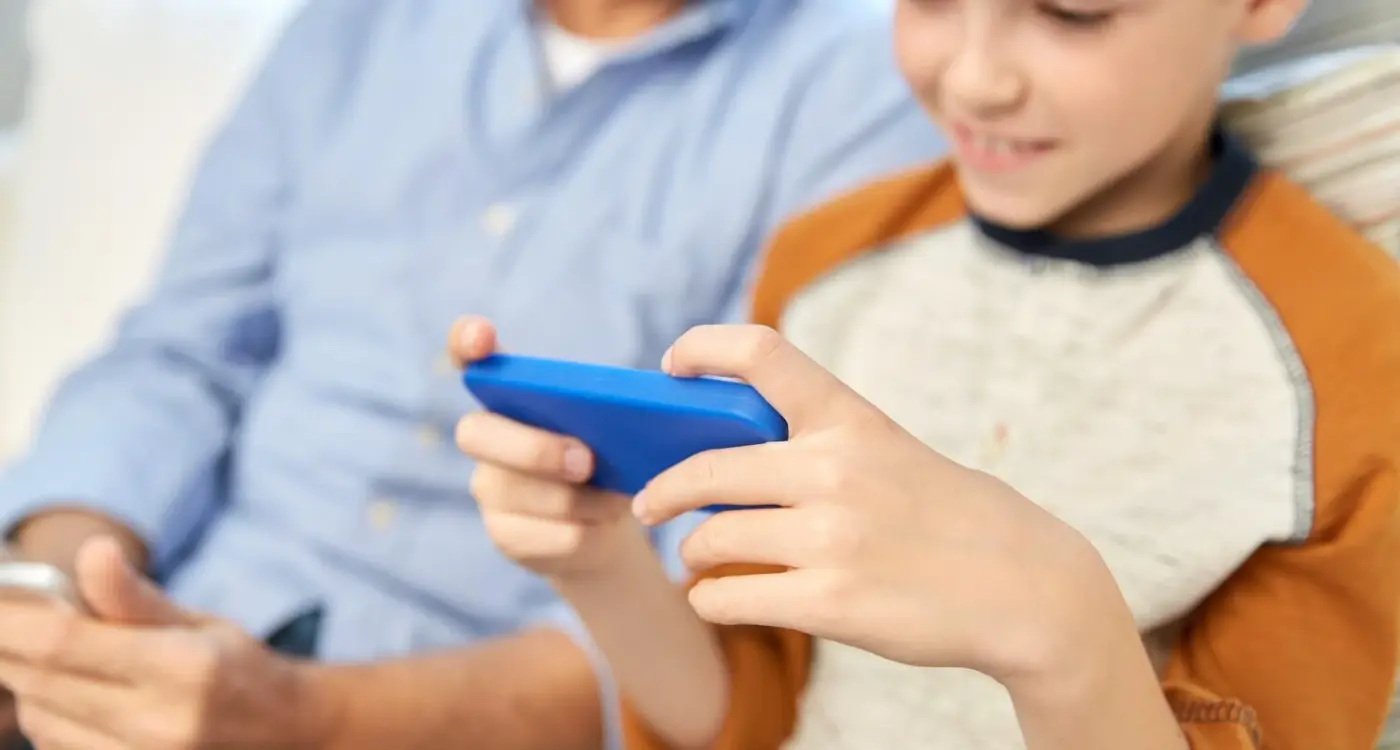How Does GDPR Apply to My Mobile App?
If you're developing a mobile app in 2025, chances are you've heard about GDPR and might be feeling a bit overwhelmed. Trust us - we've been there. After helping hundreds of app developers navigate these waters, we know that GDPR compliance can seem like a massive mountain to climb.
The good news? It's not as complicated as it first appears. Whether you're building a simple fitness tracker or a complex social platform, understanding how GDPR affects your mobile app is crucial - especially if you're targeting users in the UK or European Economic Area (EEA).
Privacy isn't just a legal requirement - it's a fundamental right that builds trust between your app and its users.
Think of GDPR as a recipe book for handling personal data responsibly. Just as you wouldn't serve food without following proper hygiene standards, you shouldn't handle user data without following proper privacy standards. Throughout this guide, we'll break down everything you need to know about GDPR and mobile apps into bite-sized, practical pieces.
We'll explore what types of data your app might be collecting (sometimes without you realising it!), how to properly ask for user consent, and what to do if things go wrong. We'll also look at real-world examples and common pitfalls to avoid, drawing from our experience of developing GDPR-compliant apps since the regulation came into force in 2018.
So, grab a cuppa, and let's demystify GDPR together - no legal jargon or scaremongering, just clear, practical guidance for making your app privacy-friendly and legally compliant.
What is GDPR and Why Should I Care?
Remember when everyone's inbox was flooded with "We've updated our privacy policy" emails back in 2018? That was GDPR making its grand entrance. The General Data Protection Regulation (GDPR) is the EU and UK's groundbreaking data protection law that's changed how we handle personal information – including in our mobile apps.
What Exactly is GDPR?
Think of GDPR as a strict but fair referee in a football match. It sets the rules for how organisations can collect and use personal data while giving individuals more control over their information. For mobile apps, it's particularly important because we're often collecting sensitive data like location, contact details, and usage patterns.
Why Should App Owners Care?
Besides the obvious reason of avoiding hefty fines (which can reach £17.5 million or 4% of annual global turnover, whichever is higher), GDPR compliance matters for several key reasons:
- Building trust with users who are increasingly privacy-conscious
- Protecting your app's reputation in an age where data breaches make headlines
- Ensuring your app can operate legally in the UK and EU markets
- Future-proofing your app as data protection laws become stricter globally
- Creating better, more transparent relationships with your users
The good news is that GDPR compliance doesn't have to be scary. While it might seem daunting at first (we've all been there!), understanding and implementing GDPR requirements can actually help you build a better, more trustworthy app. Think of it as an opportunity to show your users that you take their privacy seriously – something that's becoming increasingly important in today's digital world.
Key GDPR Terms Every App Developer Should Know
Let's face it - diving into GDPR terminology can feel like learning a new language. As app developers, we've all been there, staring at legal documents and wondering what they mean for our projects. Don't worry - we'll break down the essential terms into bite-sized pieces that actually make sense.
The Basic Building Blocks
| Term | What It Really Means |
|---|---|
| Data Controller | That's you! As the app owner, you decide how and why you collect user data |
| Data Processor | Anyone who handles data on your behalf (like cloud storage providers) |
| Data Subject | Your app users - the people whose data you're collecting |
| Personal Data | Any information that could identify a user (even their device ID!) |
Think of it like a restaurant - you're the owner (controller), your staff are processors, and your customers are the data subjects. Just as you'd be responsible for keeping customer details safe at your restaurant, you're responsible for protecting user data in your app.
Understanding these terms isn't just about ticking boxes - it's about knowing your role in protecting user privacy. When you're clear on who's who, making GDPR-compliant decisions becomes much more straightforward.
Remember: If you're working with third-party services, they're usually your data processors. Make sure you have proper agreements in place with them - just like you'd have contracts with your suppliers in a real-world business.
Personal Data in Mobile Apps: What Counts?
Let's be honest - figuring out what counts as personal data in your mobile app can feel like trying to solve a puzzle blindfolded. We've helped hundreds of app owners navigate these waters, and the first question is usually "Does this tiny bit of information really count as personal data?"
The Basics of Personal Data
In the world of mobile apps, personal data is any information that could identify a user, either on its own or when combined with other data. Think of it like pieces of a jigsaw puzzle - even small pieces can help complete the picture of who someone is.
The obvious bits include things like names, email addresses, and phone numbers. But here's where it gets interesting - GDPR also counts less obvious information like IP addresses, device IDs, and even location data as personal information. Even something as seemingly innocent as your user's morning running route could be considered personal data!
Common Mobile App Data Types
In our experience developing apps, these are the most common types of personal data you're likely to handle:
• Login credentials • Device information • Location data • Usage patterns and behaviour • In-app purchase history • Photos and media • Health and fitness data • Social media connections
Remember that time when fitness apps were surprised to learn their users' running routes were considered personal data? That's exactly why it's crucial to think broadly about what constitutes personal information. When in doubt, it's better to err on the side of caution and treat questionable data as personal data - your users will thank you for it!
Getting Proper User Consent for Your App
Getting user consent might seem straightforward, but it's a bit like making the perfect cup of tea - there's an art to doing it properly. As app developers, we've seen many well-meaning companies stumble with consent, often thinking a simple 'I agree' button is enough (spoiler alert: it's not).
What Makes Consent Valid?
Under GDPR, consent must be freely given, specific, informed, and unambiguous. Think of it as asking someone if they'd like to join your book club - you need to tell them when you meet, what books you'll read, and how you'll use their contact details. Similarly, your app needs to clearly explain what data you're collecting and why.
Consent is not a one-time checkbox - it's an ongoing relationship of trust between your app and its users
Practical Steps for Consent
When designing your consent mechanism, avoid bundling multiple permissions together. Instead, break them down into specific, clear choices. For example, if your fitness app tracks location and heart rate, ask for these permissions separately and explain why each is needed. Remember those pre-ticked boxes we all used to see? They're now a definite no-no under GDPR.
Most importantly, make withdrawing consent as easy as giving it. We often tell our clients to imagine their gran trying to navigate their app's privacy settings - if she'd struggle, it needs simplifying. Include clear instructions in your app's settings menu about how users can change their mind and what happens to their data afterwards.
Keep records of who consented to what and when - you might need to prove it later. Think of it as keeping receipts for your Christmas shopping; you hope you won't need them, but you'll be glad to have them if you do.
Data Protection by Design: Building Privacy into Your App
Remember when you'd build a house of cards as a child? You couldn't just slap the cards together at random - you needed a careful, thoughtful approach from the very start. That's exactly what 'Data Protection by Design' means for your mobile app.
Starting with Privacy in Mind
Rather than treating privacy as an afterthought (like trying to squeeze vegetables into a fussy toddler's meal), you need to make it a fundamental part of your app's DNA from day one. This means carefully considering privacy implications at every step of development, from initial sketches to final testing.
In our experience at Glance, we've found that the most successful privacy-first approaches focus on collecting only essential data. Think of it like packing for a holiday - you only want to take what you'll actually need. If your fitness app doesn't genuinely need to know users' exact location or access their contact list, don't ask for it.
Practical Privacy Measures
Some practical steps include implementing data minimisation (collecting only what you need), using pseudonymisation where possible (replacing identifying information with artificial identifiers), and ensuring proper security measures like encryption are in place. We've seen many apps succeed by following the 'privacy by default' principle - having the strictest privacy settings activated automatically.
Remember, building privacy into your app isn't just about ticking boxes for GDPR compliance - it's about showing respect for your users and earning their trust. When users feel their privacy is genuinely protected, they're more likely to engage meaningfully with your app and recommend it to others.
User Rights and Your App's Responsibilities
Think of GDPR user rights as a 'customer service charter' for personal data. Just as you'd expect a shop to let you return faulty goods, GDPR gives app users specific rights over their personal information - and it's our job as app creators to honour these.
The Eight Fundamental Rights
Your app users have eight core rights under GDPR, and it's rather like having a TV remote control for their personal data. They can access their data (view what you've collected), rectify it (fix any mistakes), erase it (the famous 'right to be forgotten'), restrict processing (pause data use), and transfer their data (move it elsewhere). They can also object to certain uses of their data, particularly for marketing.
Making Rights Accessible
Remember when you last tried to cancel a subscription and couldn't find the 'cancel' button anywhere? Frustrating, wasn't it? Don't be that app. Make these rights easily accessible within your app's interface. We recommend creating a dedicated 'Privacy Centre' where users can exercise their rights with clear, simple buttons or forms.
You'll need to respond to these requests promptly - typically within one month. Just as you'd keep a record of customer service interactions, maintain a log of all data-related requests and your responses. It's not just good practice; it's required for GDPR compliance.
Consider building automated systems to handle common data requests. For example, allowing users to download their data directly through your app can save you time while improving user satisfaction. Just ensure there are proper identity verification steps in place!
Storing and Handling App Data Safely
Let's face it - keeping user data safe can feel like trying to protect your grandmother's secret recipe collection, except the stakes are much higher! As app developers, we understand the responsibility of safeguarding personal information can seem overwhelming, but it doesn't have to be.
Essential Data Storage Principles
Think of data storage like keeping your valuables in a bank vault rather than under your mattress. The key is implementing robust security measures whilst maintaining accessibility for legitimate uses. From our experience helping countless app developers navigate these waters, we've found that following proper storage protocols isn't just about compliance - it's about building trust with your users.
- Encrypt all personal data both in transit and at rest using industry-standard encryption (AES-256 is your friend)
- Store data within the EU/UK unless you have explicit arrangements for international transfers
- Implement automatic data deletion when it's no longer needed (like clearing out your garage!)
- Use secure, authenticated APIs for all data transfers
- Regularly backup data, but ensure backups are equally secure
Regular Security Reviews
Just as you wouldn't leave your house without checking the locks, regular security audits are essential. We recommend monthly reviews of your data handling practices. Remember that time when WhatsApp had to rapidly update their privacy policies? That's exactly the kind of situation you want to avoid by staying proactive.
The golden rule is simple: treat user data as if it were your own personal information. If you wouldn't feel comfortable with how the data is being handled if it were yours, it's time to reconsider your approach.
What to Do If There's a Data Breach
Despite our best efforts, data breaches can happen to anyone. It's a bit like accidentally leaving your front door unlocked - even the most security-conscious among us can make mistakes. The key is knowing exactly what to do when it happens.
Immediate Actions Required
First things first: don't panic. As soon as you discover a breach, you'll need to act quickly but thoughtfully. Start by documenting everything you know about the breach - when it happened, what data was affected, and how many users might be impacted. Think of it like taking photos after a car accident; you need evidence of everything.
A data breach is not just a technical incident - it's a breach of trust that requires swift, honest, and transparent action to remedy.
Notification Requirements
Under GDPR, you must notify the Information Commissioner's Office (ICO) within 72 hours of discovering a breach that risks people's rights and freedoms. That's just three days - about the same time it takes to recover from a bank holiday weekend! If the breach is high-risk, you'll also need to inform affected users directly.
Remember to communicate clearly and honestly with your users. Explain what happened, what data was compromised, and what steps you're taking to prevent future breaches. It's also wise to suggest actions they can take to protect themselves, such as changing passwords or monitoring their accounts for suspicious activity.
After the immediate crisis, conduct a thorough review of what went wrong and how to prevent similar incidents. This might mean updating your security measures, improving staff training, or revising your data handling procedures. Think of it as strengthening your fortress after discovering a weak spot.
Working with Third-Party Services and GDPR
Let's face it - modern apps rarely exist in isolation. Whether you're using analytics tools, payment processors, or cloud storage services, third-party integrations are likely an essential part of your mobile app. But here's the thing: under GDPR, you're responsible for how these services handle your users' data.
Your Responsibilities with Third Parties
Think of it like inviting someone to look after your house - you're still responsible for what happens inside, even if you're not the one doing it. When you share user data with third-party services, you need to ensure they're GDPR-compliant too.
We've seen many app developers caught off guard when their perfectly compliant app suddenly falls foul of GDPR because of a third-party service. It's a bit like discovering your trustworthy house-sitter has been hosting parties without your knowledge!
- Review all third-party services' privacy policies and data handling practices
- Document which user data is shared with each service
- Include third-party data sharing in your privacy policy
- Set up Data Processing Agreements (DPAs) with each service provider
- Regularly audit third-party services for compliance
Remember those popular social media login buttons? They're brilliant for user experience but require extra attention under GDPR. Make sure you're only sharing necessary data and that users understand exactly what they're agreeing to when they click that friendly "Login with Facebook" button.
The good news is that most reputable third-party services are already GDPR-aware and provide the documentation you need. Just don't take it for granted - always do your homework before integrating any new service.
Conclusion
We know that navigating GDPR for your mobile app can feel like trying to complete a particularly tricky puzzle - one where the pieces keep changing shape. After all, protecting user privacy whilst delivering a brilliant app experience isn't always straightforward.
But here's the encouraging news: implementing GDPR compliance isn't just about avoiding hefty fines or ticking regulatory boxes. It's about building trust with your users and showing them that you value their privacy. In today's digital world, where data breaches regularly make headlines, that trust is absolutely priceless.
Remember, GDPR compliance is an ongoing journey, not a destination. As your app evolves and grows, so too should your privacy measures. Keep an eye on regulatory updates, regularly review your data handling practices, and always put your users' privacy rights at the heart of your development decisions.
Whether you're a solo developer working from your kitchen table or part of a larger development team, the principles we've covered in this guide will help you build privacy-conscious apps that your users can trust. Think of GDPR as your app's privacy compass - it might seem daunting at first, but it's ultimately there to guide you in the right direction.
If you're ever unsure about any aspect of GDPR compliance, don't hesitate to seek professional legal advice. After all, it's better to ask questions now than face challenges later. Here's to creating apps that not only delight users but also respect and protect their privacy - because that's what truly great app development is all about.
Share this
Subscribe To Our Learning Centre
You May Also Like
These Related Guides

How To Develop A Mobile Health App

How Do I Make My App Compliant With Different Countries' Data Laws?



